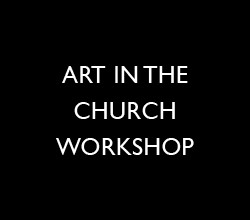The irony is not lost on me: I love watching “Project Runway” – the reality competition show for aspiring fashion designers hosted by supermodel Heidi Klum – and yet my own personal fashion sense leaves much to be desired. Many items in my wardrobe sit somewhere between “tired” and “frumpy,” or keep their permanent place in my closet for sentimental, rather than aesthetic, reasons. My wife is regularly appalled by the colour pairings I come up with each morning on the way out of the house, and all in all I am no authority on what is “in” and what is “out” when it comes to the sartorial realm. Nevertheless, I find myself transfixed by all the fabric, the colours, the sketching, sewing and stitching, and finally the wildly imaginative garments that shimmer and shine as they glide down the runway. I love listening to fashion guru Tim Gunn dispense sage advice as the designers struggle to actualize their complex creative ideas.
The advent of a new season of “Project Runway” provides an appropriate opportunity to investigate a word seemingly out of place in serious “theological aesthetics”: style. It is a term common in the world of fashion, but seems somehow inadequate when it comes to describing important things like how earthly creativity relates to theological categories. Perhaps this perceived inadequacy stems from overuse – we speak a language full of hairstyles, clothing styles, style guides, “style icons,” even all-encompassing “lifestyles.” By and large we associate the term with surfaces, with the ‘superficial’ aspects of lived existence.
However, as in the work of Protestant theologian Paul Tillich, style – from aesthetic, political and philosophical “styles” to postwar American notions of “lifestyle” – is of critical theological importance. For Tillich, “every style points to a self-interpretation of man,” making an implicit existential statement about the relationship of a particular society to what he called ultimate concern, the transcendent domain of God, Spirit and Being. Whatever you make of the rest of Tillich’s thought, he is quite illuminating on this point: it is in deciphering the “style” of a work of art or cultural product that one can find manifested an entire culture’s attitude toward the horizon of ultimate meaning. The way a Dutch painter’s brush renders a particular detail of a landscape, or the shape of a Japanese character traced by a calligrapher’s pen, may tell us more about the way a society conceives of itself in relation to the gods than a thousand words written on the subject. Reformed philosopher Calvin Seerveld provides a helpful definition of “style” and how it is not restricted to the sphere of the “fine arts”:
“In its original sense then, “style” would be the dated, particular world-and-life-view-oriented, allusive moment to human life, as it rules art in uncountable ways, and as it fellow-travels functionally within dress, thought, feeling, worship and all the other kinds of human activity.” (Rainbows for the Fallen World, 130)
Tillich traces the word back to its origin as stilus, a pencil or writing instrument. For style gives a shape and a “depth-content” to form, the way a sculpting tool carefully gives particular contours to a statue. Subject-matter and form do not exist in a vacuum outside of a specific time and place; style “qualifies” form by means of a “more universal form principle,” situating a work of art in its socio-historical context. To understand a particular style – from high-flying 1980s hairdos to the use of chiaroscuro in a Renaissance painting, from “grunge” and “mod” clothing to yarmulkes, burqas and tefillin – is to better understand the answer the culture in which it arose gave to “the question of the ultimate meaning of its existence.” Of course this is a difficult task. One might conclude that an era fixated on ornamentation and extravagance in its fashion, art and architecture has turned inward upon itself, closed off to the divine. Conversely, however, perhaps a willingness to experiment with outrageous shapes and designs speaks of a healthy theological appreciation for human creativity, simply exemplifying what Calvin Seerveld called the “cultural amplification of creation.”
Although Tillich did not write extensively on fashion per se, his theo-aesthetic approach to each stylistic detail of a painting by a Nolde, Rouault or Picasso is easily applicable to each ruffle and seam on one of the beautiful garments created by an Yves St.-Laurent, Karl Lagerfeld or Coco Chanel. In fact, in recent years the dividing line between fashion and art has all but disappeared; the MoMA’s retrospective of the late Alexander McQueen (‘Savage Beauty’) was their most popular exhibition of all time. Perhaps an artfully conceived and executed piece of couture may disclose as much about the subterranean “spiritual sustenance” (or lack thereof) of a society as Goya’s bleeding corpses or Monet’s water-lilies. We can perhaps tentatively begin to sketch a theological account of the evolution of style in the “world of fashion” just as has been done (by Rookmaaker, for example) in the artworld.
Of course the same criticisms can be made of “high fashion” as can be leveled at “high art”: that it is elitist, decadent, tending toward l’art pour l’art rather than a rootedness in social realities. And certainly for Tillich there is also “the danger that a preoccupation with style – especially with contemporaneous style – may soften the criticism of the form.” Catholic theologian Hans Urs von Balthasar emphasized “seeing the form” as critical to the Christian life, the way our perception of earthly aesthetic forms points us toward the crucified “form” (Gestalt) of Christ. Yet even Balthasar highlighted the importance of theological “style,” from the “clerical” styles of the patristic theologians to the “lay” styles of the poets and playwrights. Style and form are not opposites, but work together to disclose meaning. For Tillich, style may even be the occasion of something “analogous” to theophany. In our encounter with it, style may have a “sudden, unexpected, grasping” quality, not unlike (although of course not precisely “like” either!) the appearance of the living God.
Perhaps it is important to reflect on what our “styles” – from the way we dress and arrange our hair to our approach to making and regarding art – say about us as a society, how our “life-style” coincides with our “life-form,” implicitly revealing our “ultimate concern” amidst a range of secondary ones. Tillich reminds us there is something about “Project Runway” of interest to us in pursuit of a theological approach to art and aesthetics: fashion design is creative, itself a subtle form of art, and being afforded a window on this creative process forces us to look more deeply at even such a “superficial” concept as “style.”
Brett Potter is currently a PhD student in theology and art at the Toronto School of Theology (University of St. Michael’s College) and previously did an MCS in Christianity and the Arts at Regent College in Vancouver. He is also an active video artist and musician.
Quotations are from Paul Tillich, On Art and Architecture, eds. John and Jane Dillenberger (New York: Crossroad Publishing Company, 1989).





Your thoughts regarding the capacity for style to reveal something about the society or culture in which it is situated is very helpful and fascinating. It is nice to see Tillich’s thought on art being used in a constructive way.
I was wondering if you have any thoughts about the way that style can also conceal , or even mislead. For example, it is quite common for companies to adopt a green (eco-friendly) style (if I can use style in this way) in the way that they present themselves. The desire to appear green to one’s public obviously points towards contemporary society’s obsession with environmental issues. But one can also appear green without actually being green. In other words, is it not possible for one to self-consciously use a particular style in order to create a facade that actually masks one’s “ultimate concern” (to use Tillich’s phrase)? How do I know if style points to something real, or if it is pure artifice?
You’re definitely on to something interesting there… how “style” can mask political or ideological “concerns,” perhaps in the same moment it discloses them!
I would say the key is being attentive to the minute details – to be able to pick up what the style itself says about the content, and whether the “surface” message has seams through which other “concerns” shine through. For example, is there a difference between an ‘authentic’ environmental message and one assumed by a company in order to sell more products? And can we tell the difference by paying careful attention to the style (of a commercial, etc.) in itself?
This year at the Toronto Film Festival there was a controversial film about how some companies promote their own interests by using breast cancer as a kind of marketing tool (“cause marketing”). So ethical questions about style and substance are very important to raise.
Brett,
Sorry that you are having a difficult time leaving a comment. Hopefully we can figure out how to resolve this problem with our website.
I think your suggestion that the students of cultural style must play close attention to the various embodiments of style is very important. I wonder if it is not also important to pay close attention to the contexts in which a style is chosen, adopted or constructed. Perhaps context can give some clue as to whether a style masks certain aspects of reality, or whether it reveals something true. I imagine this is a very complex issue, and I am reminded that some even ‘genuineness’ and ‘authenticity’ can itself be a style. I have noticed this particularly in financial firm that present a public face that wants to assure customers they can be trusted (I think especially of that soft, quiet voice on commercials aimed at giving the sense that this bank or investment firm is your confidant). I have even been in churches that have adopted various ways of dressing or performing a service aimed at giving the sense that the church is filled with ‘authentic christians.’
All of this makes me wonder what is style and what is not, and if all things ultimately must be presented and comprehended through the construct ‘style.’
I like Tillich’s observation that style is a type of “depth-content”… kind of a “the medium is the message” idea. We can’t pretend that style is neutral, or that somehow we can communicate without adopting a particular style. When it comes to the church, “worship styles” etc. may communicate as much content as does the actual “content.” I agree with your point about context… I suppose context and style have a sort of symbiotic relationship. Style reveals cultural context, and context shapes style…